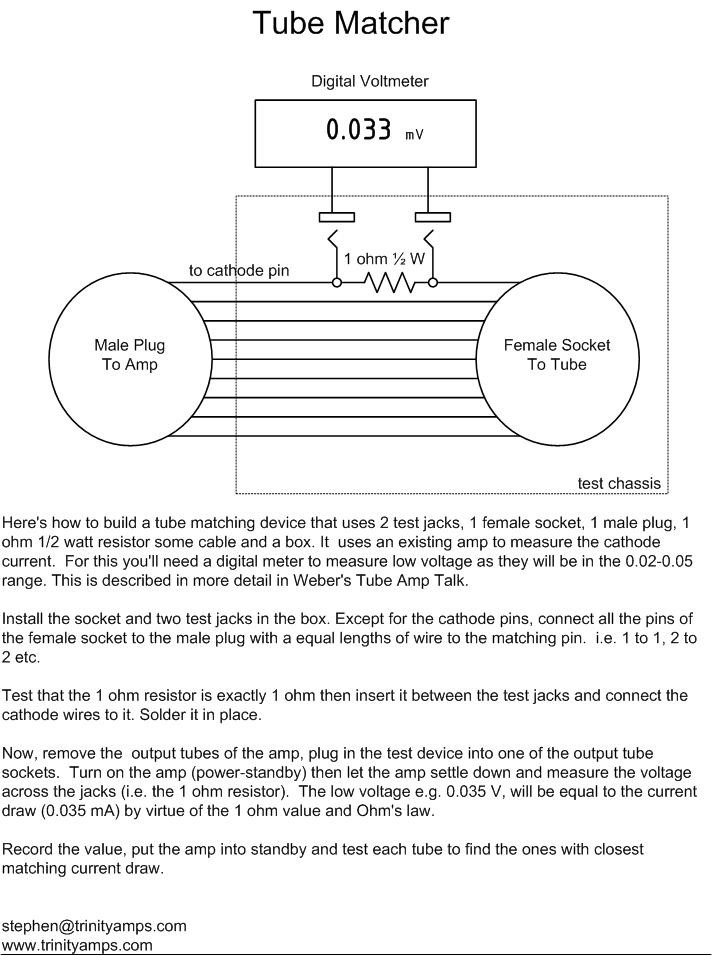Here's how to build a cheap tube matching device that uses 2 test jacks, 1 female socket, 1 male plug, 1 ohm 1/2 watt resistor some cable and a box. It uses an existing amp to measure the cathode current. For this you'll need a digital meter to measure low voltage as they will be in the 0.02-0.05 range. This is described in more detail in BBQ's Tube Amp Talk.
This emulates testing tubes in place.
Install the socket and two test jacks in the box. Except for the cathode pins, connect all the pins of the female socket to the male plug with a equal lengths of wire to the matching pin. i.e. 1 to 1, 2 to 2 etc.
Test that the 1 ohm resistor is exactly 1 ohm then insert it between the test jacks and connect the cathode wires to it. Solder it in place.
Now, remove the output tubes of the amp, plug in the test device into one of the output tube sockets. Turn on the amp (power-standby) then let the amp settle down and measure the voltage across the jacks (i.e. the 1 ohm resistor). The low voltage e.g. 0.035 V, will be equal to the current draw (0.035 mA) by virtue of the 1 ohm value and Ohm's law.
Record the value, put the amp into standby and test each tube to find the ones with closest matching current draw.
Measure current drain at idle.
Hope this helps out with your build!
PS Don't get too carried away with exact matching of tubes.




